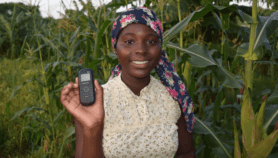By: Matthew Harsh
Send to a friend
The details you provide on this page will not be used to send unsolicited email, and will not be sold to a 3rd party. See privacy policy.
Prizes for innovation must be used carefully to ensure that poor people in developing countries are the real winners, says Matthew Harsh.
Many well-known prizes, such as the Nobel Prize, reward past achievement in various scientific fields. Some prizes — for example the Hideyo Noguchi Africa Prize, Ramanujan Prize and Trieste Science Prize — recognise accomplishments of developing country scientists specifically.
Prizes can also be created to spur innovation. Some donors, governments and foundations are betting that these so-called inducement prizes can promote sustainable innovation in developing countries.
But the strategy should be approached with caution to ensure that prize-winning technologies really do make life better for the poor.
Encouraging innovation
Inducement prizes are becoming more common. A global study by the management consultants McKinsey & Company tracked 219 prizes for solutions to social problems over the past 35 years and showed that they account for 78% of new prize money. [1]
History shows the transformative effect of prize-driven innovation. In 1925, businessman Raymond Orteig offered US$25,000 to the first person to fly across the Atlantic Ocean. Famously won by Charles Lindbergh, the competition is credited with spawning the modern aviation industry.
In the same vein, the X Prize Foundation created the Ansari X Prize for the first team to send three people to space twice in two weeks, offering a US$10-million purse.
Donors are now using prizes to spur innovations that will specifically benefit developing countries. For instance, the X Prize Foundation has created competitions for efficient and clean-burning cookstoves, rapid and cheap methods of diagnosing tuberculosis, and ways to increase the level of micronutrients in the diet.
The Bill and Melinda Gates Foundation and the US government also support prizes for development. To help Haiti recover from the 2010 earthquake, they created a US$10-million prize for the first companies to create a system to transfer money via mobile phones.
Benefits and risks
Prizes have the benefit of inviting radical innovation, said Robynn Sturm from the US Office of Science and Technology Policy and Jaykumar Menon of the X Prize Foundation at the annual meeting of the American Association for the Advancement of Science in February 2011.
Donors typically stimulate innovation through competitive grants, but this favours applicants who use proven approaches and invites incremental progress, such as tweaks to current technologies.
Prize competitions, in contrast, stimulate ‘out of the box’ thinking. They specify only the end result, not the approach to be used, and "attract diverse groups of experts, practitioners, and laypeople — regardless of formal credentials — to attempt to solve difficult problems", according to the McKinsey study.
Because donors only pay for results, prizes are economically efficient — a compelling motivation for governments in the current economic climate.
And prizes often leverage significant investment in new ideas. The Ansari X Prize generated at least US$100 million of investment, 10 times the amount of the prize. If donors gave a grant or contract to one company for the prize amount, it might not create any additional investment at all.
One downside to using prizes for innovation in development is that participants must find their own funds to develop their potentially prize-winning technologies, and this could shut out poorer innovators.
And the very nature of these competitions may hinder development. Prizes occur at one point in time and target specific technical challenges — a strategy that may not build long-term capacity for innovation.
Furthermore, the inventor usually retains the intellectual property rights for a prize-winning technology, hampering distribution to people in poor countries and failing to improve likelihoods.
Winning designs
With careful and creative prize design, donors can address some of these issues. For example, prizes can reward innovators at various milestones of the process. This creates market competition and rewards the use of a technology, not just its creation.
The Haiti mobile-phone prize was awarded in this way. Digicel, the first operator to develop a money transfer system for mobile phones, received US$2.5 million, a quarter of the total amount. The next company to develop such a system will receive US$1.5 million, with the remaining US$6 million split between companies according to their proportion of the first 5 million transfers.
Prizes can also specify rules that are conducive to development. A donor may choose to measure success in terms of the distribution of a technology or its economic benefit to farmers, says William Masters, an agricultural economist at Purdue University. [2]
Thomas Kalil of the University of California, Berkeley, recommends mandatory licensing of intellectual property for a prize-winning technology to a public-sector partner in a poor country. [3]
But even with milestones, metrics and rules, it is difficult to ensure that prizes create innovations with sustainable production and distribution channels. Prizes can be a useful policy tool but they are not a panacea for sustainable innovation and should be deployed wisely.
Ultimately, success must be measured in terms of improved livelihoods. Otherwise innovators may win prizes, but poor people will lose out.
Matthew Harsh is a postdoctoral associate at the Consortium for Science, Policy and Outcomes and the Center for Nanotechnology in Society at Arizona State University, United States.
References
[1] McKinsey & Company (2009) http://www.mckinsey.com/app_media/reports/sso/and_the_winner_is.pdf ![]() [3.53MB]
[3.53MB]
[2] AgBioForum 6(1&2), 71–74 (2003) http://www.agbioforum.org/v6n12/v6n12a14-masters.htm
[3] The Hamilton Project (2006) http://www.brookings.edu/views/papers/200612kalil_pb.pdf ![]()
![]()
![]()













